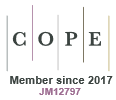Just Accepted
This article has been peer reviewed and accepted for publication. It is in production and has not been edited, so may differ from the final published form.
A novel fire regime driven by increased lightning activity and lightning ignition efficiency for northwestern Patagonia
Abstract
Background Northwestern Patagonia has in recent decades experienced large lightning-ignited wildfires that suggests ongoing changes into a novel fire regime. Aims This study investigates spatial and temporal patterns, drivers and trends in lightning and lightning storm incidence and lightning ignition efficiency. Methods We spatially/temporally matched ten years of lightning stroke data, historical fire records, and atmospheric reanalysis datasets. Key results Andean forests had the highest incidence of dry lightning and highest ignition efficiency. Incidence of large lightning storms was associated to high atmospheric convective activity related to an enhanced south reaching South American Low-Level Jet. Lightning ignitions were largely controlled by antecedent fire weather represented threshold values of Fire Weather Index. Positive multidecadal trends atmospheric instability and frequency extreme fire weather relate to the observed 18-fold increase in lightning-caused fires accounting for nearly 50% of the area burned in the last decade. Conclusions More frequent lighting-ignited wildfires results from both increased monsoonal influence inducing atmospheric instability and warming-drying trends that impact on fuel conditions. Implications Continued warming combined with increasing lightning activity, suggest a growing role for lightning-ignited fires in shaping regional fire regimes thus posing new challenges to fire mangers and the society.
WF25016 Accepted 22 July 2025
© CSIRO 2025


